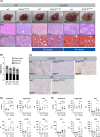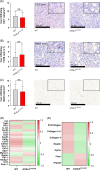The ferroptosis mediator ACSL4 fails to prevent disease progression in mouse models of MASLD
- PMID: 40377498
- PMCID: PMC12088639
- DOI: 10.1097/HC9.0000000000000684
The ferroptosis mediator ACSL4 fails to prevent disease progression in mouse models of MASLD
Abstract
Background: Metabolic dysfunction-associated steatotic liver disease (MASLD) is an increasingly prevalent condition and a major risk factor for chronic liver damage, potentially leading to steatohepatitis and HCC. It is already known that patients with MASLD show increased systemic and hepatic iron concentrations as well as perturbed lipid metabolism, suggesting the involvement of ferroptosis in the development and progression of MASLD. Consequently, inhibition of ferroptosis represents a potential therapeutic option for patients with MASLD.
Methods: We investigated whether liver parenchymal cell-specific deletion (LPC-KO) of the pro-ferroptotic gene acyl-CoA synthetase long-chain family member 4 (ACSL4LPC-KO) reduces MASLD onset and progression in mice. ACSL4LPC-KO and wild-type littermates were fed a choline-deficient high-fat diet (CD-HFD) or a Western diet for 20 weeks (CD-HFD and Western diet) or 40 weeks (CD-HFD only) to monitor MASLD progression and metabolic syndrome development.
Results: In contrast to the recently published studies by Duan et al, our results show no significant differences between ACSL4LPC-KO and wild-type mice with regard to the development of MASLD or the progression of metabolic syndrome. Furthermore, no differences were observed in metabolic parameters (ie, weight gain, glucose tolerance test, hepatic steatosis) or MASLD-associated inflammatory response.
Conclusions: Our analyses, therefore, suggest that loss of ACSL4 has no effect on the progression of MASLD induced by CD-HFD or the Western diet. The discrepancy between our and previously published results could be due to differences in the diets or the influence of a distinct microbiome, so the results obtained with hepatocyte-specific ACSL4LPC-KO should be taken with caution.
Keywords: MAFLD; MASH; NASH; cell death; metabolic syndrome.
Copyright © 2025 The Author(s). Published by Wolters Kluwer Health, Inc. on behalf of the American Association for the Study of Liver Diseases.
Conflict of interest statement
Marcus Conrad is cofounder and shareholder of ROSCUE Therapeutics GmbH. The remaining authors have no conflicts to report.
Figures




References
-
- Liu J, Ayada I, Zhang X, Wang L, Li Y, Wen T, et al. . Estimating global prevalence of metabolic dysfunction-associated fatty liver disease in overweight or obese adults. Clin Gastroenterol Hepatol. 2022;20:e573–e82. - PubMed
-
- Wing RR, Phelan S. Long-term weight loss maintenance. Am J Clin Nutr. 2005;82(1 suppl):222S–225SS. - PubMed
MeSH terms
Substances
LinkOut - more resources
Full Text Sources
Research Materials

